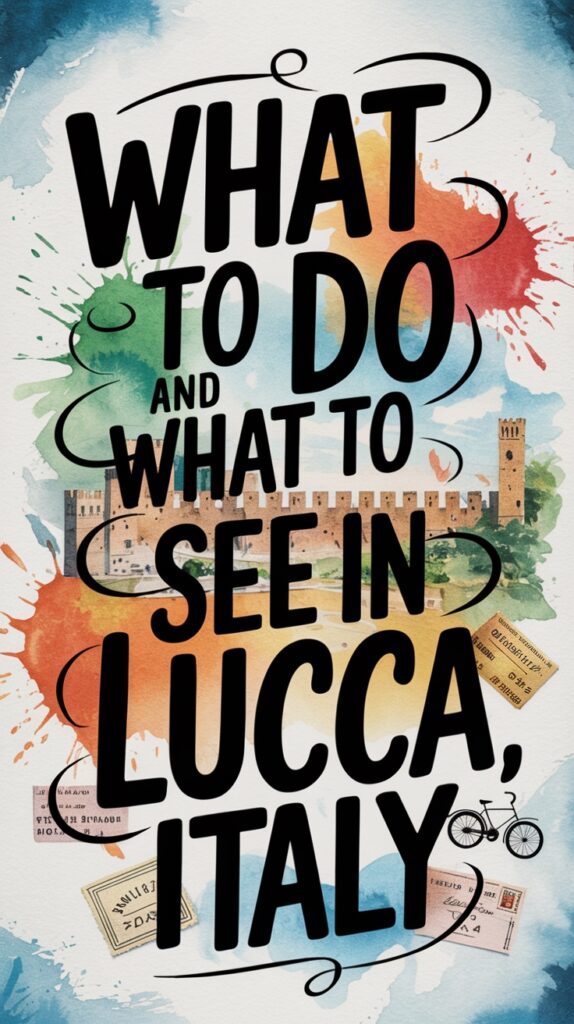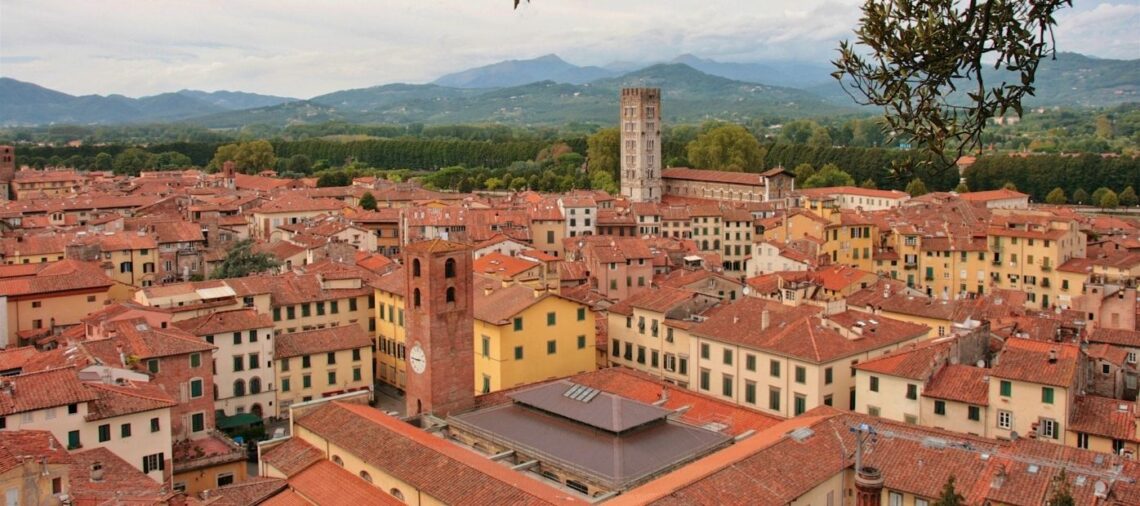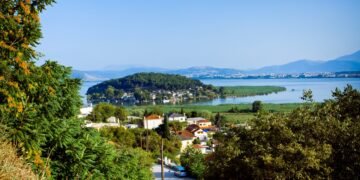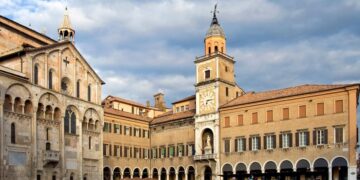Hearty welcome to Lucca, Italy, a city etched in beautiful Renaissance-era walls. Your itinerary begins with the 11th-century Lucca Cathedral, notable for its Romanesque and Gothic architecture. Ascend the Guinigi Tower for panoramic city views from a rooftop garden adorned with ancient oaks. Step back to Roman times at Piazza dell’Anfiteatro, then move on to the heart of Lucca’s history at Puccini’s Birthplace Museum. Refresh your senses in the Botanical Garden before wrapping up your tour at the grand Palazzo Ducale. Lucca’s compelling history and tranquil natural beauty will enthrall you to uncover more about this city’s engaging soul. Let’s find out what to do and what to see in Lucca, Italy!
Lucca Cathedral
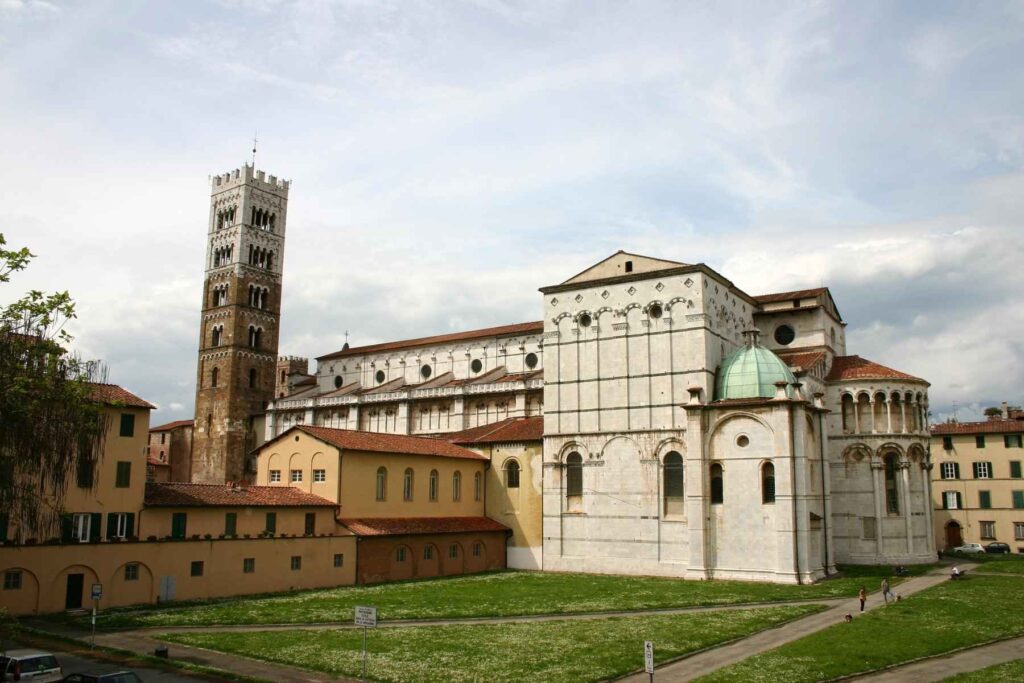
The Lucca Cathedral, officially known as the Duomo di San Martino, stands as a magnificent blend of Romanesque and Gothic architecture dating to the 11th century. Its dramatic facade captures the eye with Romanesque marble hunting scenes, the most prominent of which portrays St. Martin dividing his cloak with a beggar.
Inside, an octagonal tempietto commands attention, housing the revered relic of the holy countenance, the Volto Santo, a mysterious medieval artifact that has drawn pilgrims for centuries. The cathedral’s artistic wealth continues in the sacristy where visitors find the tender effigy of Ilaria del Carretto. This masterpiece, sculpted by Jacopo della Quercia, is a touching tribute to the young woman, whose serene features are frozen in marble, immortalizing her in a moment of eternal repose.
A climb to the top of the Campanile bell tower is rewarded with panoramic views of the city, offering a different perspective of Lucca’s historic charm. From here, one can genuinely appreciate the cathedral’s architectural grandeur amidst the city’s picturesque backdrop. The Lucca Cathedral, in all its artistic and architectural splendor, is an indispensable gem in the heart of this Tuscan city.
Guinigi Tower
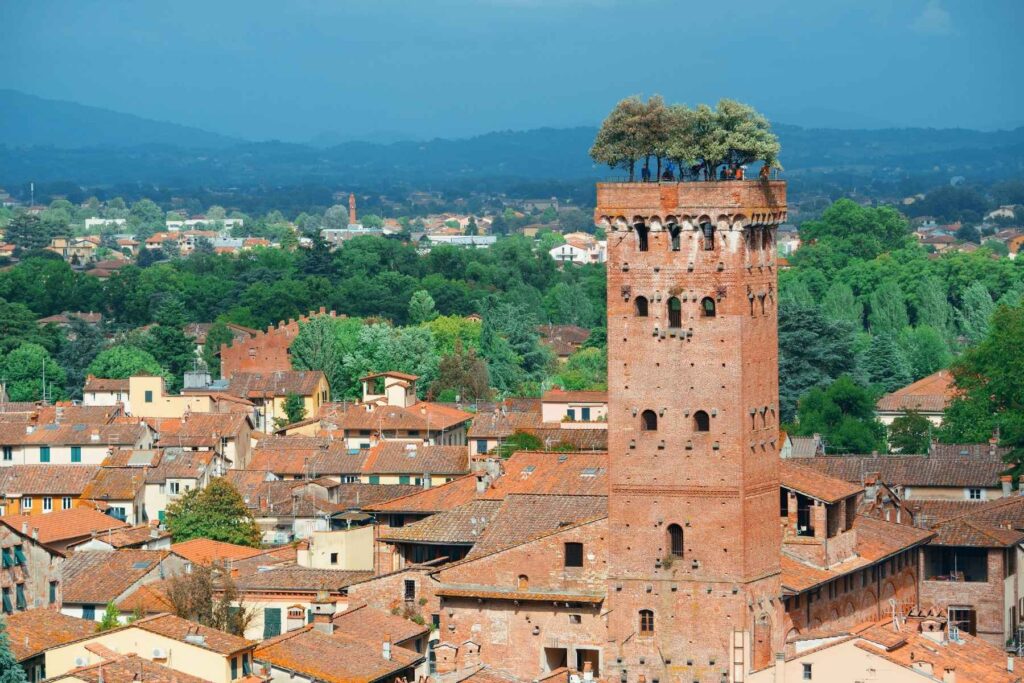
Rising majestically amidst the skyline of Lucca, Guinigi Tower is a remarkable structure, notable for its rooftop garden crowned with ancient oak trees. A physical embodiment of the Guinigi family legacy, the tower stands as a unique testament to their power and influence during their reign over the city. In fact, this unique tower house is the only one of its kind left in Lucca, enhancing its historical significance.
The oak trees on the tower are more than mere vegetation; they symbolize rebirth and renewal, their roots digging deep into the city’s rich past. Climbing the 230 steps to the top, visitors are rewarded with panoramic city views that encapsulate the charm and beauty of Lucca. From this lofty vantage point, one can trace the outline of the ancient Roman amphitheater and admire the picturesque Tuscan landscapes stretching out in all directions.
Affordable visitor tickets make the Guinigi Tower accessible to everyone, allowing all the chance to experience this unique piece of history. As you ascend the winding staircase, each step you take is a journey back in time, leading you to one of the most distinctive and intriguing viewpoints in Lucca.
San Michele in Foro
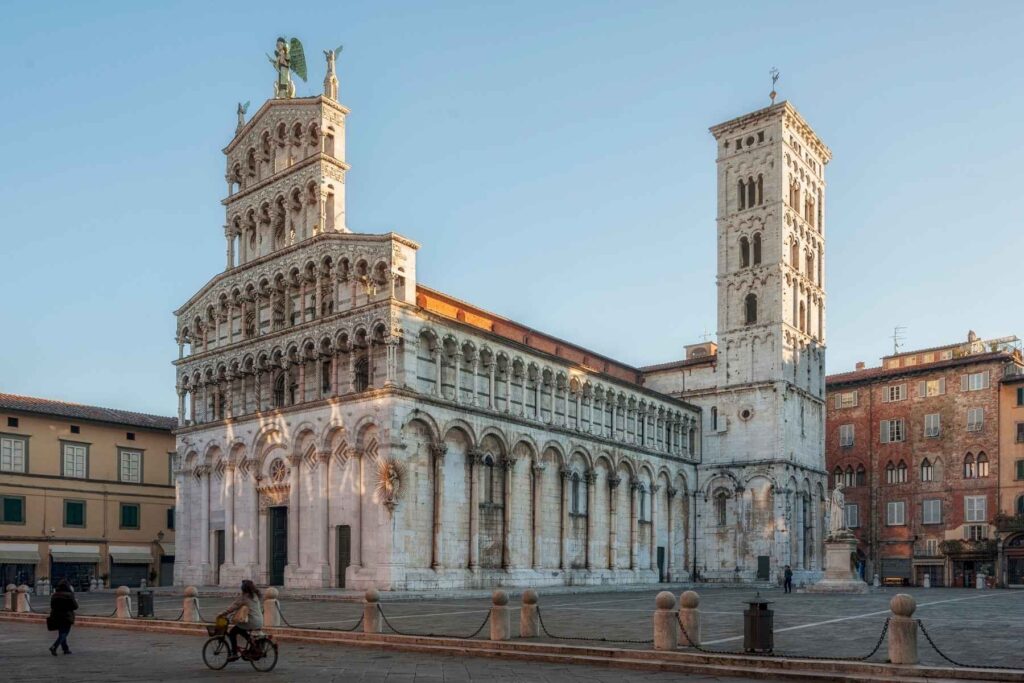
Occupying a central position in Lucca’s historic heart, San Michele in Foro is more than merely a stunning architectural marvel. As a prominent landmark, this church symbolizes the city’s rich religious heritage and serves as an enduring legacy to its Roman roots.
Bearing the hallmark of Pisan-Romanesque architecture, San Michele in Foro is an awe-inspiring spectacle. Its ornate facade, adorned with delicate colonnades, motifs, and allegories, captivates onlookers at first sight. The intricate details and craftsmanship reflect the artistic prowess of the period, further enhancing the church’s grandeur.
What sets this church apart is the large gilded statue of Archangel Michael slaying a dragon, flanked by two angels. This golden spectacle gleams in the sunlight, adding a divine touch to the cityscape.
The church’s location is no coincidence. It stands on the former site of a Roman forum, a public square that was the hub of Roman life. Today, the lively piazza surrounding San Michele in Foro continues to be a bustling center of public life in Lucca, ensuring that the church remains an integral part of the city’s daily rhythm.
San Michele in Foro is not merely a stop on a sightseeing tour; it’s a journey through time.
Piazza dell’Anfiteatro
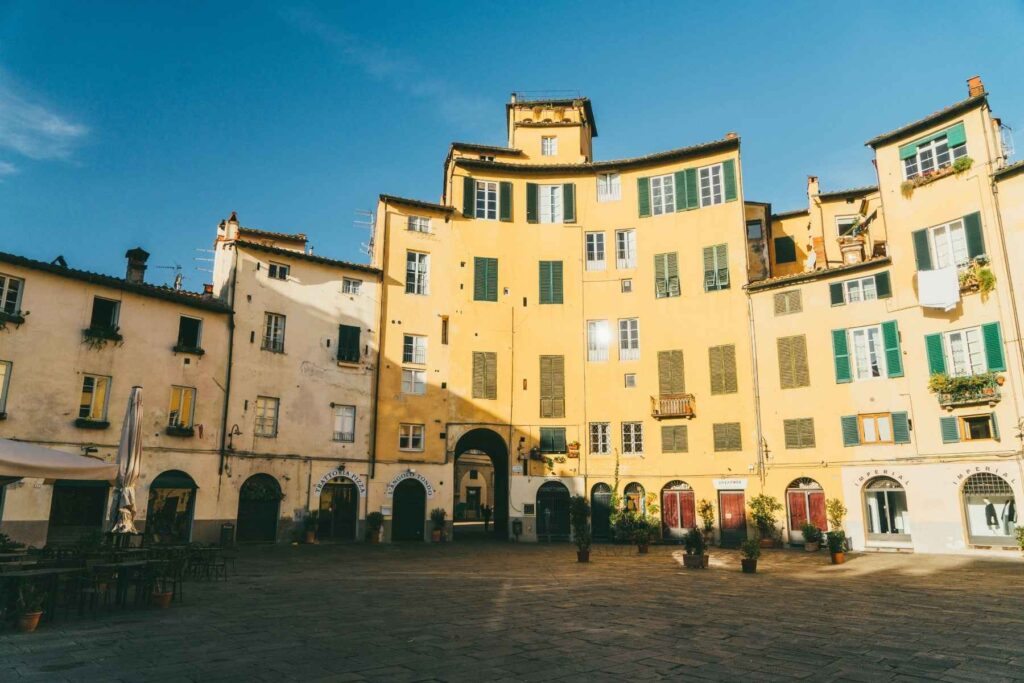
Enter the core of Lucca and plunge into the lively Piazza dell’Anfiteatro. This energetic hub, known for its unique oval layout, is a manifestation of Lucca’s rich past. As you meander through the square, soak up the medieval architecture that encircles you, a reminder of the ancient Roman amphitheater that once stood here.
The piazza’s historic significance is palpable, with the surrounding buildings tracing the original elliptical structure of the vanished amphitheater. Today, these buildings house a variety of restaurants, cafes, and shops, further enhancing the lively atmosphere that permeates the square. Whether you’re savoring a gelato, browsing local wares, or simply people-watching, you’ll be entranced by the piazza’s unique blend of the ancient and the contemporary.
Piazza dell’Anfiteatro also serves as a dynamic venue for cultural events. During the summer months, the piazza comes alive with concerts and performances, offering an immersive experience steeped in tradition and festivity. This, coupled with the piazza’s charming visual appeal, makes it one of Lucca’s must-visit attractions. Experience the thrill of the Piazza dell’Anfiteatro and let the echoes of history sweep you off your feet.
Puccini’s Birthplace Museum
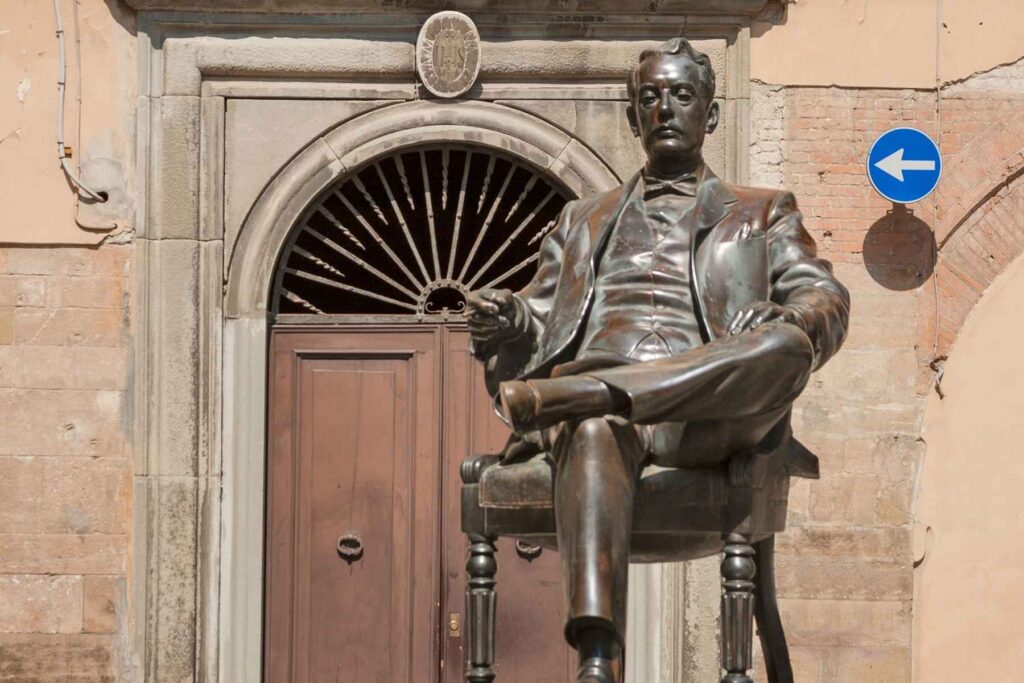
Where else can one explore deeper into the life and works of the acclaimed composer Giacomo Puccini than at the Puccini Museum – Casa Natale? Nestled in Lucca’s historic center, the museum stands as a testimony to Puccini’s impressive musical legacy and the city’s rich cultural fabric.
Housed in Puccini’s birthplace, an architectural gem that dates back centuries, the museum tells the composer’s story through a vast collection of personal memorabilia. Visitors get a chance to see Puccini’s original Steinway piano, a significant representation of his remarkable musical journey. The collections on display offer a fascinating insight into his early life and development as a composer, and their cultural significance extends well beyond the city of Lucca.
The Puccini Museum not only celebrates the life and works of one of Italy’s most celebrated musical figures, but it also serves as a lighthouse of Lucca’s cultural significance. Its architectural highlights and the collections on display are a must-see for any music lover or history enthusiast. With a high rating on TripAdvisor, this museum is a testament to Puccini’s enduring influence and a fascinating destination in its own right.
Basilica of San Frediano

Continuing the exploration of Lucca’s rich cultural heritage, the Basilica of San Frediano stands as a memorial to the city’s impressive architectural history. This church, a 12th-century marvel, showcases the Pisan-Romanesque architecture with its harmonious blend of distinct styles.
The Basilica is known for its striking gold and blue mosaic facade, which immediately catches the eye of any visitor. The facade’s brilliance is matched by the intricately carved pulpit inside, a chronicle to the artisanal skills of the period. The pulpit’s detail is a sight to behold, creating an atmosphere of reverence and awe.
The Basilica is dedicated to Saint Fredianus, an Irish-born bishop of Lucca in the 6th century. His tomb lies within the church, a silent tribute to his missionary work and leadership. His influence is felt throughout the Basilica, a place of worship that has stood the test of time.
A distinctive feature of the Basilica is its crenellated bell tower, a landmark in Lucca’s skyline. The tower’s design, coupled with the church’s architectural style, makes the Basilica of San Frediano an unmissable point of interest in Lucca’s historical landscape.
Botanical Garden of Lucca
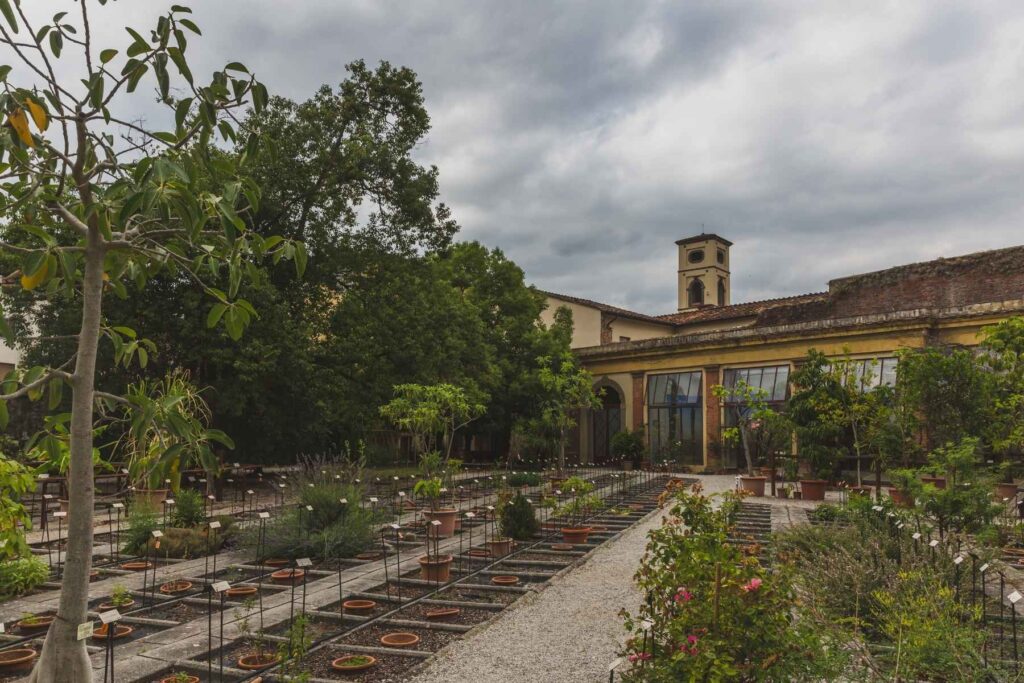
Submerge oneself in the serene beauty of the Botanical Garden of Lucca, a verdant sanctuary encased within the city’s historic walls. Founded in 1820 by Maria Louisa Bourbon, the then-duchess of Lucca, the garden holds significant historical value and has since been a living document to plant biodiversity.
The botanical garden boasts a diverse collection of plants from around the world, beautifully showcasing the architectural features of nature. Visitors are offered an immersive experience as they meander through the lush, shaded areas, appreciating the intricately arranged plant life and the serenity it brings.
The garden’s location within the city’s historic walls offers a unique blend of urban and natural aesthetics, enhancing the visitor experience.
Beyond its beauty, the Botanical Garden of Lucca serves an educational purpose. It was built to inform the public about the natural world, offering educational programs that highlight the importance of plant life and biodiversity. It’s a living museum that allows explorers a glimpse into the intricate world of flora.
Lucca’s Clock Tower
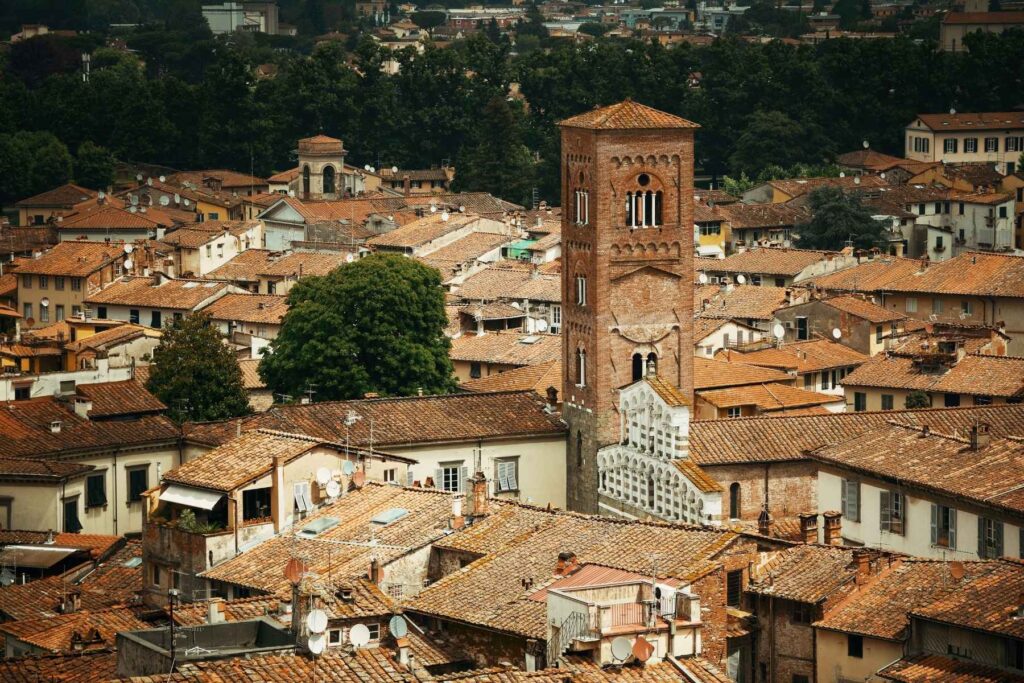
Rising majestically above Lucca’s cityscape, the Torre delle Ore, or Clock Tower, beckons visitors with the promise of stunning panoramic views. Boasting a height of 50 meters, this 13th-century edifice is the tallest viewpoint in the city, offering a unique perspective on Lucca’s architectural design and layout.
The tower’s striking appearance speaks volumes of Lucca’s medieval history. Originally a private defense tower, it changed into the city’s official timekeeper, a testament to its clock functionality. Its robust structure and formidable stature are characteristic of the era, reminding us of the city’s past as an independent republic.
Climbing the tower is an adventure in itself, with over 200 steps to conquer. The journey to the top may be a steep one, but the reward is worth the exertion. Once you reach the summit, you’re greeted with breathtaking panoramic views that encapsulate the city’s charm and historic center, a spectacle that even rivals the popular Torre Guinigi.
The tower’s accessibility is a significant part of its appeal. Whether you’re a history enthusiast, a lover of architecture, or simply someone seeking a bird’s eye view of the city, Lucca’s Clock Tower is a must-visit.
Palazzo Pfanner
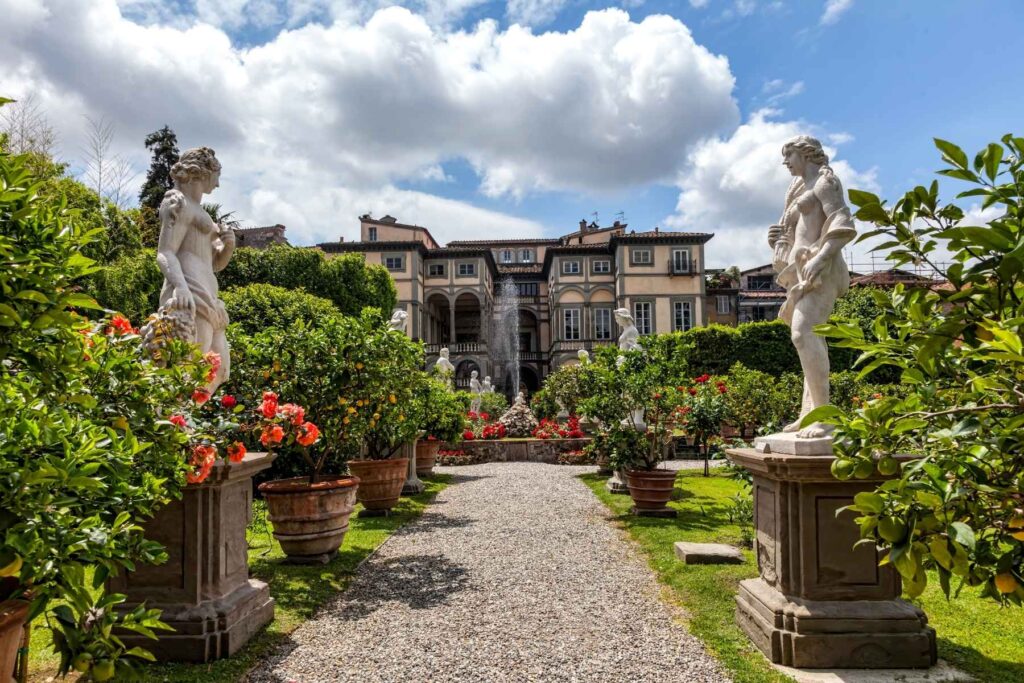
Entering the 17th century, Palazzo Pfanner offers a slice of Lucca’s rich past. This elegant mansion, once home to a wealthy merchant family, was later named after a former Austrian brewer owner. The palace’s striking architecture, classical decor, and tranquil ambiance transport visitors back in time, providing an immersive experience of Lucca’s history.
The main attraction of Palazzo Pfanner is its picturesque baroque gardens. A stroll through these well-manicured gardens, filled with a small fish pond, lemon trees, and a loggia, is like embarking on an Italian painting. The gardens also offer panoramic city views, adding to the enchantment of this historical site.
Inside the Palazzo Pfanner, visitors can marvel at the opulence of 17th-century Lucchese silk and frescoed ceilings. The intricate designs and attention to detail are a hallmark of the craftsmanship of the era. However, only a small section of the mansion is open to the public.
Despite this, the Palazzo Pfanner remains a must-visit spot in Lucca. Its timeless beauty and serene ambiance make it an unforgettable stop on any itinerary.
Palazzo Ducale
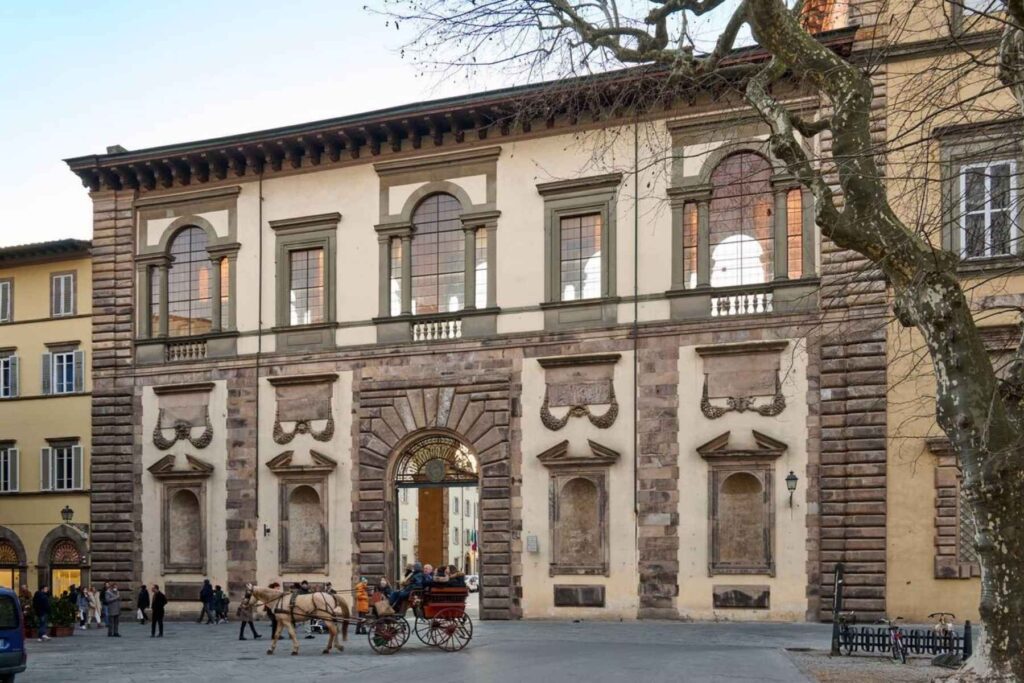
Often hailed as one of the most significant historical and architectural landmarks in Lucca, the Palazzo Ducale boasts a rich history that spans several centuries. As the residence of the ducal rulers from the 16th to the 18th century, it’s a testament to their legacy that has left a lasting impact on the city’s cultural landscape.
The Palazzo Ducale is a spectacular fusion of architectural styles, blending Renaissance, Baroque, and Neoclassical elements to create an imposing yet elegant exterior. Its historical significance is further elevated by its lavish interior design, which leaves visitors awestruck.
The ornately decorated rooms like the Sala dei Ritratti and the Sala del Trono exude grandeur and opulence, featuring frescoed ceilings, ornate furnishings, and an impressive collection of art and artifacts.
Touring the palace is like stepping back in time, as each room recounts a narrative of the ducal ruler’s era, their tastes, and their contribution to the arts. Originating from the lavish interiors, the Palazzo Ducale is a must-visit attraction in Lucca, offering a unique glimpse into the city’s rich history and architectural heritage.
People are Asking
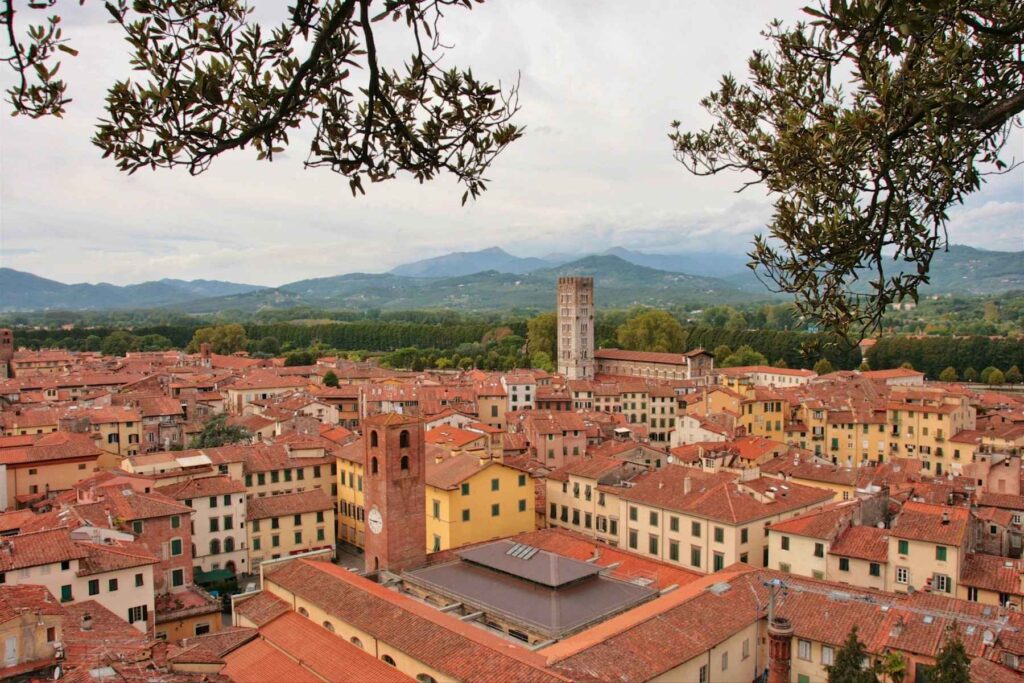
Is Lucca in Italy Worth Visiting?
Absolutely, Lucca, Italy is certainly worth visiting for its quaint historic streets, lively medieval architecture, picturesque old town center, impressive ancient city walls, and energetic local markets that provide an authentic Italian experience.
What Is Famous About Lucca, Italy?
Lucca, Italy is renowned for its intact Renaissance architecture, medieval city walls, and historic churches. It’s the birthplace of Puccini, boasting the unique Guinigi Tower and a rich, fascinating history that captivates every visitor.
Is There Much to Do in Lucca, Italy?
In Lucca, Italy, visitors can explore ancient city walls, marvel at historical architecture, dine on local food specialties, and enjoy the lively piazzas. The city’s rich heritage and romantic atmosphere offer a unique travel experience.
How Long Does It Take to Walk Around Lucca, Italy?
Traversing the historical city walls of Lucca, Italy, typically takes 1-2 hours at an average visitor’s pace. The pedestrian-friendly layout of this Tuscan city enhances the experience of exploring its numerous historical landmarks.
Wrapping up
As a result, Lucca is a treasure trove of cultural and historical marvels, promising its visitors an unforgettable journey. Akin to a time-traveller, one can trace the city’s enduring legacy from the medieval Guinigi Tower to Puccini’s Birthplace Museum. With its enchanting sights and rich narratives, Lucca, much like a well-aged Tuscan wine, reveals its nuanced character over time, inviting all to partake in its timeless charm.
Photos: Canva Pro
